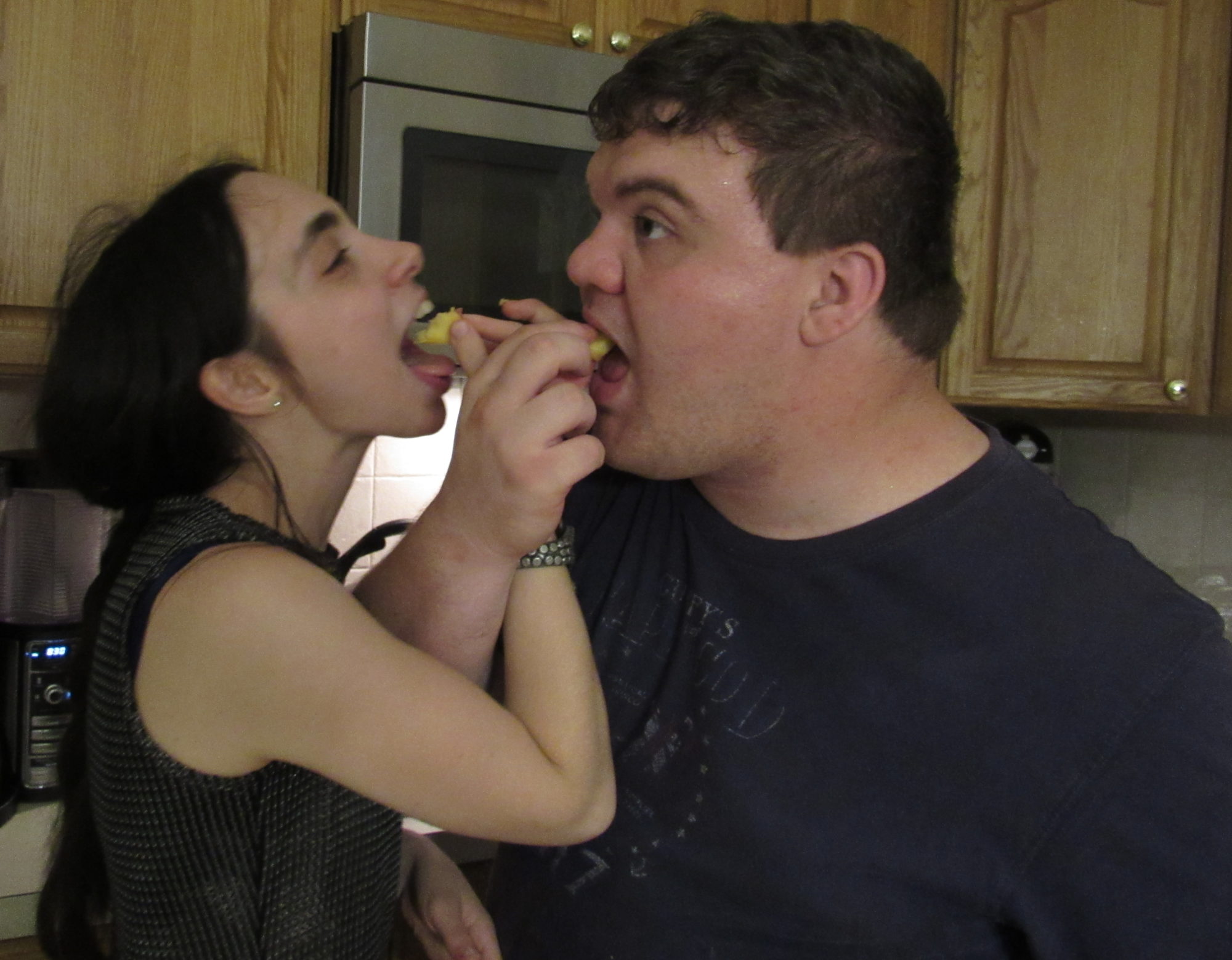Hallo! It’s October. It’s time for us to go to our first Oktoberfest, courtesy of my family. I may be Italian (with a quarter French on my mother’s side) but if we’re going to be cooking, we need to be sampling from more than our comfort-foods. Lauren, Did I ever tell you I’m part Austrian through my paternal grandfather’s side? This is the sort of stuff my great aunt would make for me when I visited and she cooked for us.
My mother and I took to the food while my father and brother took to the drinks. We won’t be going into the drinks this time. It was just root beer, cream soda, regular beer, seltzer, apple cider, and water. For now, let’s focus on the food. There were all sorts of dishes to get us into the spirit of Germany: knackwurst and bratwurst, spätzle, pretzels, sauerkraut, German potato salad, and periogies (which are Polish – not German, and came out of a freezer bag, but who’s asking) for the main meal, with some apple strudel, cider donuts, and German chocolate cake for dessert. It was a feast. I had to make sure that I didn’t go overboard, especially on the treats – that’s where Lauren came in to help me split everything with her.
Oktoberfest, according to Wikipedia, is a Volksfest, or a beer festival with lots of activities. It is usually held in the waning weeks of September into the first week or so of October. Ours was a little late, and wasn’t as beer-centered as the original, but it was our version of it; after all, it’s origins are rooted in celebration and observing German and Bavarian culture.
As for the food – as usual, it was all excellent. There are actually several types of sausage out there. “-wurst” means sausage in German. Usually they’re made from pork, beef, or veal, and contain white pepper, salt, and mace. Spices are determined based on the local area. In German, “Knack-” means “snap” like the natural snap from casing the meat. Think of them like hot dogs, but made from much finer meat and much less fat. Brätwurst on the other hand contains mostly finely ground pork and veal (hence the “brät” in the name). It has a distinctive white color to it due to its initial boiling. These tend to be milder than the others. My friend Sarah Koster would have an easy time translating these names. She took German in high school and sang the German version of The Beatles “I Want to Hold Your Hand” and “She Loves You” to me after sleeping over.
What goes well with sausages – sauerkraut (which translates to “sour cabbage”). I may not be a huge fan, but apparently the stuff is really good for you in the same way as kimchi what with the pickling brine and the regular benefits of cabbage. Sauerkraut takes roughly one to six months to ferment if you want the home-made stuff, so for the party, we bought the stuff in market, boiled it in some water with a little brown sugar to adjust the flavor and served it cold. I loved it that way. There’s none of that Brussels sprout flavor and all the fun pucker of vinegar potato chips and dill pickles.
Spätzle is a southern German food – the equivalent of egg noodles that are roughly cut and served in sauces or with gravies. They are made using only flour, salt, and eggs (of course). The flour traditionally used in the preparation of this dish is the equivalent of a semolina flour or pasta flour. The number of eggs used, according to tradition, should be the same as the number of people eating the dish. When the dough has been made, it is scraped into little, bite-sized pieces, using a spätzlebret, into a pot of boiling water. It is a relatively simple dish to make, with many, many applications. We had ours as a side dish, and let me tell you, I was going to town on them (don’t let Lauren know…) Too late. I’m editing your half, Mister! I loved it too, but I let it last longer.
Finally there was the Strudel (German for “whirlpool” or “eddy”). Let me tell you, they had to keep me away from this. It looked so good, it reminded me of Fantastic Beasts and Where to Find Them. In one of the scenes, they make this dish. Since then, I’ve always wanted to taste it, but never had the chance to. Now was my chance, but alas, I am trying to be healthier. Anyways! This is a German puff pastry dish served with a fruit and nut center but can contain cheese too. It is an example of a roulade – a dish of rolled or filled pastry. It is made from stretched dough (an example of how to make it can be found at FineCooking).
With the party now over, I think it is time for me to hit the gym again to work off all that wonderful food. Especially since Thanksgiving is right around the corner and all. Just you wait and see…mon amore.
